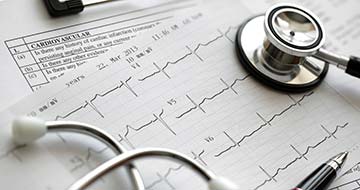Services
The first step in your care process is to understand the nature of your disease so that we can diagnose your condition.
Cardiac Electrophysiology, is the study of the electrical activities of the heart, specifically for the purposes of diag...
When our patients present with problems that may be cardiovascular in nature, we help determine the most likely diagnosi...
We help our patients improve blood flow in their arteries and veins by using very small tubes and specialized tools to d...
When the heart is functioning normally, the arteries are clear and open to allow for easy passage of blood through and o...
The highly trained surgeons and specialists at Biltmore diagnose and treat structural heart disease. We understand the n...
Peripheral Vascular Disease: “It only hurts when I walk.”
Peripheral Vascular Disease (PVD) is a blockage or narrowing of the blood vessels outside of the heart and brain that gets worse over time. Organs, especially the legs and feet, supplied by these vessels may not get enough blood flow to work well. As a result, ignoring leg pain caused by Peripheral Vascular Disease can lead to disability or loss of limb.
The terms“peripheral vascular disease and peripheral arterial disease are often used interchangeably. PVD is often found in people with coronary artery disease. That is because atherosclerosis, which causes coronary artery disease, affects arteries throughout the body.
The most common PVD symptom is a painful cramping that occurs with exercise and is relieved by rest.
During rest, the muscles need less blood flow, so the pain disappears. It may occur in one or both legs depending on the location of the clogged or narrowed artery.
PVD Symptoms
- Skin changes, including coldness or thin/brittle/shiny skin on legs/feet
- Diminished pulses in the legs/feet
- Hair loss on the legs
- Impotence
- Non-healing wounds over pressure points, such as heels or ankles
- Restricted movement
- Numbness, weakness or heaviness in muscles
- Burning or aching pain in the toes and at night while lying flat
- Paleness when the legs are elevated
- Reddish-blue color of the legs/feet
- Thickened, opaque toenails
PVD Risk Factors
There are both genetic and lifestyle-related risk factors. Those who smoke or have diabetes have the highest risk of complications from PVD because these risk factors also cause impaired blood flow.
Genetic Predisposition
- High cholesterol
- High blood pressure
- Coronary artery disease
- Diabetes
Lifestyle-related
- Smoking
- Obesity
- Physical inactivity
PVD Treatment
There are two main goals for treatment of PVD: control the symptoms and halt the progression of the disease to lower the risk for heart attack, stroke and other complications. Treatment is based on age, overall health and medical history, other conditions and the overall progression of the disease.
- Treatment often begins with lifestyle changes (exercise, proper nutrition and smoking cessation), and treatment of existing conditions that may aggravate PVD, such as diabetes, high blood pressure and high cholesterol.
- A vascular specialist, such as a vascular surgeon or an interventional cardiologist, may also recommend medications for improving blood flow or surgical options to create larger openings in the affected vessels, increasing blood flow.
- An aggressive treatment plan may prevent complications such as heart attack, stroke, amputation, pain and loss of mobility.
If you’re concerned about PVD, consult your doctor for diagnosis and treatment. Together, you can create a prevention plan for PVD that may prevent or lessen the progress of PVD once it is diagnosed.







